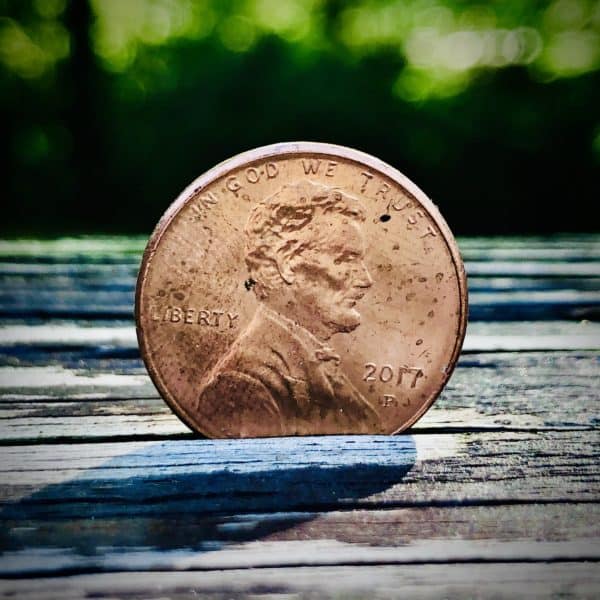 We recently caught up with Evan Kuo, CEO at Ampleforth, a new crypto-asset protocol for developing “fair and independent money.” Kuo, a mechatronics, robotics, and automation engineering graduate from the University of California, Berkeley, argues that Bitcoin (BTC), the flagship cryptocurrency, has the potential to transform the world’s financial system.
We recently caught up with Evan Kuo, CEO at Ampleforth, a new crypto-asset protocol for developing “fair and independent money.” Kuo, a mechatronics, robotics, and automation engineering graduate from the University of California, Berkeley, argues that Bitcoin (BTC), the flagship cryptocurrency, has the potential to transform the world’s financial system.
However, the tech entrepreneur questions whether or not bitcoin or other similar cryptocurrencies will be able to outgrow their function as an investment vehicle or eventually act as a major reserve currency held by financial institutions.
In an attempt to improve upon the existing Bitcoin protocol, Ampleforth and Chainlink have announced an integration that will allow the project’s native AMPL token, which is currently tradable on Bitfinex, Kucoin, Uniswap and Bancor, to make enhancements to fixed-supply commodity monies, like gold and BTC.
You’ve mentioned that Ampleforth will be the first financial asset that will use Chainlink oracles to aggregate off-chain pricing data in a secure and timely manner for its protocol. The protocol will be integrated with Chainlink, and includes Ampleforth’s Market Oracle (volume-weighted price) and CPI Oracle (current price target).
You’ve also noted that the oracles will be powered by nine different incoming price feeds from three different aggregators, which collectively assist in adjusting AMPL’s outstanding supply after every 24-hour period.
Please explain how this process works and which price feeds and aggregators are used and why.
 Evan Kuo: “We are pleased to be the first monetary asset integrated with Chainlink’s service.
Evan Kuo: “We are pleased to be the first monetary asset integrated with Chainlink’s service.
This integration helps us further decentralize our oracle by supplying price information from three independent data providers across 9 nodes, creating redundancy and minimizing dependence on any single provider.
Chainlink will also serve as an additional provider of monthly PCE information from the Bureau of Economic Analysis. The PCE is a statistical measure that the Ampleforth protocol uses to ensure the AMPL price target is unaffected by inflation.”
You’ve pointed out that by incorporating external data, you can further improve what the Bitcoin protocol aims to do. Please tell us how this would create a better or more useful form of money.
Evan Kuo: “From our perspective, it was clear that Bitcoin’s creators had discovered something special — the ability to engineer scarcity in a purely digital context.
And through this discovery, Bitcoin’s creators succeeded in producing a digital gold. A commodity-money, something much more like a natural resource and much less like a bank — something potentially fundamental and lasting.
Knowing that digital scarcity could be engineered, the next question was clear, ‘can we create a commodity-money that’s better than gold?’
We learned through our research, that the great virtue of natural commodity-monies like gold and silver, is they are absolutely scarce and decentralized. The fact that no individual can arbitrarily increase the total supply of natural commodity-monies, makes them immune to runaway inflation.
But we also learned that the great failing of natural commodity-monies is supply inelasticity. Natural commodity monies cannot efficiently respond to changes in demand— making them vulnerable to destabilizing economic shocks and runaway deflation.
To address this shortcoming, we designed the AMPL to automatically propagate price-information into supply, much like how thermal expansion propagates nearby kinetic energy into a material’s volume in the natural world.
This automatic supply policy is counter-cyclical and non-dilutive, making the Ample immune to both runaway inflation and runaway deflation. A reliable and decentralized source of price information is critical to this function.”
Bitcoins are produced based on a fixed supply schedule, meanwhile, AMPLs are counter-cyclical and constantly seek price-supply equilibria, which requires detecting and reacting to market price automatically.”
You mention that Ample is a commodity-money, like Bitcoin or gold, however, it has “near-perfect supply elasticity, like fiat.” Please explain why this is important.
Evan Kuo: “The Ampleforth protocol proportionally increases or decreases the quantity of tokens each user holds based on the price exchange rate between the AMPL and the 2019 dollar.
It is counter-cyclical in the sense that when there’s more demand than supply, the protocol automatically increases the total quantity of tokens to prevent the relative price of goods from rising, which left alone leads to hoarding and deflationary spiral.
Similarly, when there’s less demand than supply the protocol automatically decreases the quantity of goods to prevent the relative price of goods from falling.
Lastly, because all supply adjustments affect users proportionally the protocol is non-dilutive.
We think this is important because it addresses the only real problem with gold as a base-money.”
What are your short-term and long-term goals for the Ampleforth project?
Evan Guo: “At the moment we’re looking carefully at the movement pattern of the AMPL token. Our hypothesis is that the fundamental incentives of the system will result in a movement pattern that is altogether distinct from today’s digital assets and traditional assets alike.
This is important because we think it will cause the token to be less correlated with other assets which could be extremely important for diversification.
In the long run, we’d love to see the AMPL used as reserve collateral in decentralized banks or even central banks.”
What led you to create AMPL? What were you seeing with Bitcoin that led you to invent this interesting protocol?
Evan Kuo: “Brandon Iles, the other co-founder of Ampleforth, and I have always shared in this fascination with building something that could live beyond our time.
Very few things have this lasting quality. People, machines, companies, banks, even governments come and go. But the Bitcoin protocol stood out as something that might live on.
From our perspective, it was clear that Bitcoin’s creators had discovered something special — the ability to engineer scarcity in a purely digital context.
And through this discovery, Bitcoin’s creators succeeded in producing a digital gold. A commodity-money, something much more like a natural resource and much less like a bank — something potentially fundamental and lasting.
Knowing that digital scarcity could be engineered, the next question was clear, ‘can we create something better than gold?’ Not a bank, but a commodity-money. We thought perhaps that too could last.
And what was wrong with gold anyways? What else was truly special about Bitcoin? What made it different from gold?
We had so many questions, and not enough answers, so we sought help. The journey of answering our questions, that’s what led us to create the Ampleforth protocol.”
So what are AMPLs? And what problem do they solve?
Evan Kuo: “As explained, the AMPL is a commodity-money, like Bitcoin or gold, but with near-perfect supply elasticity, like fiat. It is the first sound money with elastic supply.
We learned through our research, that the great virtue of natural commodity-monies, is they are absolutely scarce and decentralized. Since no individual can arbitrarily increase the total supply of natural commodity-monies, they are immune to runaway inflation.
But we also learned that the great failing of natural commodity-monies is their supply inelasticity. They cannot efficiently respond to changes in demand— making them vulnerable to economic shocks and runaway deflation.
This is why we transitioned into pure fiat to begin with. After the industrial revolution, it became possible to create paper-monies that were cheap to produce, but expensive to manufacture, allowing for high supply elasticity.
For a time, under the Bretton woods system these paper monies were redeemable for gold, but in 1971 US president Richard Nixon was forced to cancel the dollar’s redeemability— to prevent a deflationary spiral.
Had we switched gold for Bitcoin under this system, we would have been no better off. So we designed the AMPL to be a suitable base-money alternative to gold.
The AMPL has an elastic supply policy that adjusts supply in response to demand. However, because the protocol’s supply changes are automatic and affect everyone equally, the AMPL is non-dilutive and can never be debased by inflation.”

